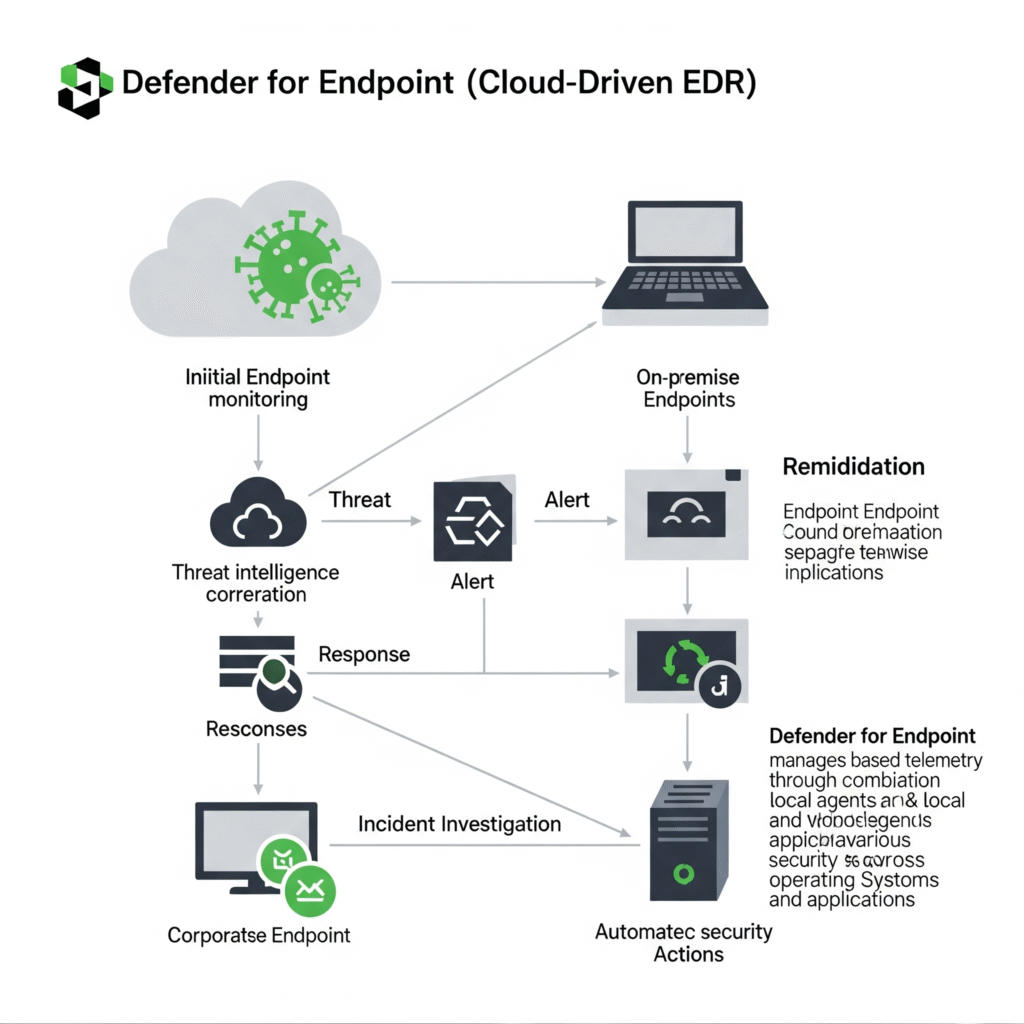Top 10 Best Features of Windows Security 2025: A Complete Guide
Table of Contents
Introduction
In an era where cyber threats are evolving at an unprecedented pace, Windows Security 2025 emerges as one of the most powerful operating system security platforms ever released by Microsoft. Packed with AI-driven threat detection, zero trust enhancements, and robust hardware-integrated security, Windows 11 2025 security features aim to make endpoint protection effortless and intelligent.In this blog, we explore the top security features of Windows 2025 that IT professionals, system admins, and cybersecurity enthusiasts need to know.
1. Microsoft Pluton Security Processor
A hardware-based security processor embedded directly into the CPU, first introduced on Surface devices and expanded in 2025 to more OEMs.
Benefits:
Stores sensitive data like credentials and encryption keys in hardware.
Resists physical attacks and firmware tampering.
Complements TPM 2.0 with enhanced integrity.
2. Windows Hello Enhanced Biometrics
In Windows Security 2025, Microsoft has significantly improved Windows Hello by enhancing both its accuracy and versatility. One major upgrade is its ability to perform facial recognition in low-light conditions, ensuring reliable authentication regardless of lighting. Additionally, Windows Hello now supports multimodal biometrics, combining facial recognition, fingerprint scanning, and a secure PIN fallback. This layered approach improves both security and user convenience across laptops, desktops, and hybrid devices.

Another key advancement is the shift to on-device AI processing for biometric data. Unlike previous implementations that relied partly on cloud services, all biometric recognition now occurs locally on the device, minimizing privacy risks. This aligns strongly with Microsoft’s broader passwordless authentication strategy and taps into the growing demand for secure, frictionless login experiences
3. Microsoft Defender XDR Integration
In Windows Security 2025, Microsoft Defender has been fully integrated into the Microsoft XDR (Extended Detection and Response) ecosystem, transforming it into a more intelligent and centralized security solution. This integration allows organizations to detect, investigate, and respond to threats across multiple endpoints using a single platform. By analyzing behavioral patterns and leveraging AI-driven detection, Defender XDR can automatically identify and respond to advanced attacks with greater speed and precision than traditional tools.
One of the biggest advantages of Defender XDR is its unified security dashboard, which provides real-time visibility across devices, users, apps, and data—both on-premises and in the cloud. It’s natively integrated with Microsoft 365 and Azure, enabling seamless policy enforcement and automated remediation actions. For organizations managing hybrid cloud environments, this eliminates the need for fragmented EDR solutions and simplifies security operations with a centralized, cloud-powered defense system.
Click here to download Windows Server 2025
4. Windows Kernel Isolation & Virtualization-Based Security (VBS)
Windows Security 2025 brings significant enhancements to Kernel Isolation and Virtualization-Based Security (VBS), strengthening the foundational defenses of the operating system. VBS now runs with improved performance optimization, ensuring advanced protection doesn’t come at the cost of system speed. One major upgrade is the use of hardware-enforced memory integrity checks, which prevent malicious code from tampering with critical parts of the kernel—one of the most targeted areas by sophisticated malware.

In addition, Microsoft has introduced isolated containers for critical system processes, creating a secure, virtual boundary around essential functions of the OS. This architectural isolation makes it extremely difficult for attackers to exploit low-level vulnerabilities or inject malicious drivers. The overall result is a more hardened operating system that resists kernel-level exploits and driver-based malware, offering enterprise-grade security right out of the box.
5. Smart App Control (Next-Gen)
In Windows Security 2025, Smart App Control has been redesigned as a next-generation app protection system that intelligently blocks untrusted or potentially harmful applications using Microsoft’s cloud-based reputation engine. It operates in an evaluation mode initially, learning user behavior and app usage patterns before automatically enforcing policies—eliminating the need for manual configuration. This makes it especially valuable for SMBs lacking advanced endpoint protection and home users who want added security without technical complexity.
6. Zero Trust and Conditional Access
Windows 11 Security 2025 embraces a Zero Trust model by embedding conditional access directly at the operating system level. It enforces identity-based access policies, evaluates the device’s security posture in real time, and integrates seamlessly with Microsoft Entra ID (formerly Azure AD). This ensures that access to apps and data is granted only when both the user identity and device health meet predefined security requirements—adding a powerful layer of protection for organizations adopting modern, hybrid work environments.
7. TPM 2.0 Compliance and Attestation
In Windows Security 2025, TPM 2.0 compliance is now mandatory across all supported devices, ensuring a consistent hardware-backed root of trust. The platform includes enhanced attestation mechanisms that validate the integrity of the device at boot, making it harder for attackers to tamper with firmware or inject malicious code. By closing known bypass loopholes, these improvements significantly strengthen protection against firmware-level threats and ensure devices meet modern security standards by default.

8. 🔑 Built-in Passwordless Authentication
Windows Security 2025 expands its support for built-in passwordless authentication, making it easier than ever for users and organizations to eliminate traditional passwords. The system now works seamlessly with Microsoft Authenticator apps, FIDO2 security keys, and a broader range of third-party biometric hardware, giving users flexible, secure login options that are resistant to phishing and credential theft.
This advancement has real-world implications, especially for enterprises. Organizations can now deploy passwordless login in Active Directory environments with minimal configuration, significantly reducing their attack surface while simplifying the user experience. By removing the reliance on passwords, Windows 2025 helps enterprises enhance security and streamline identity management in both cloud and on-premises settings.
9.🧠 AI-Powered Threat Intelligence
Windows Security 2025 introduces AI-powered threat intelligence that leverages Microsoft’s global telemetry and cloud-based AI to proactively scan every email, app, and system process for suspicious behavior. By analyzing vast amounts of threat data in real time, it can detect and mitigate advanced threats like polymorphic malware—even as they evolve. With this level of intelligent automation, Microsoft is positioning its native security stack to compete directly with leading third-party platforms like CrowdStrike and SentinelOne, offering enterprise-grade protection out of the box.
10. ☁️ Defender for Endpoint (Cloud-Driven EDR)
Windows Security 2025 enhances enterprise threat management with a unified security console that now supports auto-escalation to Microsoft’s Security Operation Centers (SOCs) for expert-level intervention. Each incident includes a detailed attack timeline per device, making investigation and response more efficient. With deep integration into Azure Sentinel, this system offers centralized visibility and advanced analytics across environments, making it ideal for enterprises managing multi-tenant, hybrid, or remote-first infrastructures that demand scalable, real-time threat intelligence.

Final Thoughts
If your business or organization is serious about endpoint protection, Windows Security 2025 is more than just an OS update it’s a security platform. Whether you are upgrading from Windows 10/11 or managing hundreds of enterprise devices, the features in 2025 represent Microsoft’s strongest commitment yet to cyber resilience.
- Design



